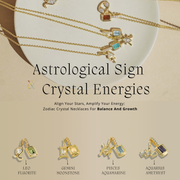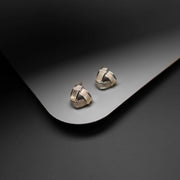What Is Topaz?
Topaz is a neosilicate mineral (Al₂SiO₄(F,OH)₂) that forms in pegmatites and vapor cavities in rhyolite lava flows. With a Mohs hardness of 8, it's one of the hardest silicate minerals, making it excellent for jewelry. While naturally colorless, trace elements and irradiation create its famous spectrum of colors.
Key Geological Characteristics
-
Composition: Aluminum silicate with fluorine
-
Crystal System: Orthorhombic (forms prismatic crystals)
-
Luster: Vitreous (glass-like) when polished
-
Sources: Brazil (primary source), Sri Lanka, Russia, Nigeria, Mexico, USA (Utah, Texas)

What Color Is Topaz? The Complete Spectrum
Contrary to popular belief, topaz occurs in more colors than just blue. Its palette includes:
| Color Variety | Cause | Rarity & Value |
|---|---|---|
| Imperial Topaz | Chromium impurities | Most valuable (orange-pink) |
| Blue Topaz | Irradiation treatment of colorless stones | Most commercially available |
| Sherry Topaz | Iron impurities (yellow-brown) | Mid-range value |
| Pink Topaz | Chromium + natural irradiation | Rare and expensive |
| Colorless | Pure form without impurities | Historically significant |
| Mystic Topaz | Artificial coating (rainbow effect) | Novelty value |
Note: Natural blue topaz is extremely rare - most commercial blue topaz is colorless material that's been irradiated and heated.
The History and Lore of Topaz
Ancient Beliefs
-
Egyptians: Associated topaz with Ra, the sun god, believing it was colored by his golden glow
-
Greeks: Thought it could increase strength and make its wearer invisible
-
Romans: Linked it to Jupiter, using it for protection and wisdom
Modern Significance
-
November Birthstone: Alongside citrine
-
23rd Anniversary Gemstone: Symbolizing enduring love
-
State Gem: Of Utah (where the largest topaz crystals have been found)
Blue Topaz: The Most Popular Variety
While natural blue topaz is scarce, treated blue topaz dominates the market in these shades:
-
Sky Blue (lightest, most affordable)
-
Swiss Blue (medium saturation)
-
London Blue (deepest, most valuable blue)
Treatment Process:
-
Colorless topaz is irradiated
-
Then heated to stabilize the color
-
Results in permanent, stable blue hues
Care Note: Despite treatment, blue topaz remains sensitive to sudden temperature changes.

Evaluating Topaz Quality and Value
1. Color (Most Important Factor)
-
Imperial Topaz: Rich orange-pink commands highest prices
-
Natural Pink: More valuable than treated pink
-
Blue: Deeper colors (London Blue) worth more than light shades
2. Clarity
-
Eye-clean stones preferred
-
Some inclusions acceptable in larger specimens
3. Cut
-
Step cuts (emerald) enhance color
-
Brilliant cuts maximize sparkle
-
Custom shapes showcase large specimens
4. Carat Weight
-
Large sizes available (unlike many colored stones)
-
Price per carat increases significantly above 10ct
Price Range: $50-$300/ct for blue topaz; Imperial topaz can reach $5,000/ct

Metaphysical Properties
Healing Benefits
-
Emotional Balance: Calms stress and promotes truth
-
Creativity: Stimulates artistic expression
-
Communication: Aligns with throat chakra
Spiritual Significance
-
Symbol of wisdom and strength
-
Believed to enhance intuition
-
Traditional talisman for protection
Caring for Your Topaz Jewelry
-
Cleaning: Mild soap, warm water, soft brush
-
Storage: Separate from harder gems (diamonds, sapphires)
-
Avoid:
-
Sudden temperature changes
-
Harsh chemicals
-
Prolonged sunlight (may fade some colors)
-
Why Topaz Remains a Jewelry Favorite
From ancient talismans to modern engagement rings, topaz continues to captivate with its:
-
Brilliant clarity (rivalling diamonds)
-
Spectrum of colors (to suit every taste)
-
Affordable luxury (compared to other gemstones)
Explore our Topaz Collection for certified, beautifully cut gems in every color variety.








